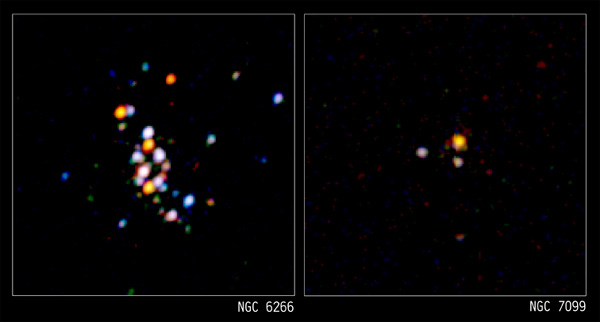

|

|
|
||||
|
NGC 6266 (or M62) and NGC 7099 (or M30): Two globular star clusters in our Galaxy at distances of 20,000 and 30,000 light years from Earth, respectively. Caption: Most of the point-like X-ray sources in these Chandra images are binary star systems containing a collapsed star, such as a neutron star or a white dwarf star, that is pulling matter off a normal companion star. A globular cluster is a spherical collection of hundreds of thousands or even millions of stars buzzing around each other in a gravitationally bound stellar beehive that is about a hundred light years in diameter. While direct, head-on collisions between stars are rare even in these crowded conditions, close encounters are frequent and can lead to the formation of X-ray emitting binary star systems. Scale: Each image is approx. 1.9 arcmin on a side. Chandra X-ray Observatory ACIS Images |
|
|